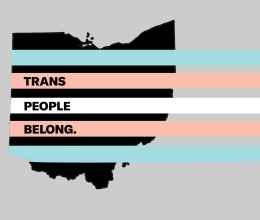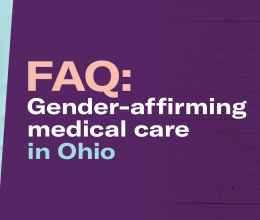In February, Representative Jena Powell reintroduced the Save Women’s Sports Act, one of three existing bills aimed at eroding trans people’s rights. House Bill 6 would effectively ban trans women from sports participation at the high school and collegiate level if passed. It is scheduled for its first committee hearing on March 8th. Ohio follows dozens of states already introducing anti-trans sports ban bills; 18 states have passed them into law. Legislators across the nation are harnessing fear-mongering tactics that liken trans rights to the peril of American traditions, including sports. They argue that trans women infiltrate women’s leagues to compromise game fairness and take home a medal. The reality is starkly different.
Transgender people comprise 1.6% of the human population. Of that fraction, even less play sports. Only 34 trans athletes have openly competed in U.S. college sports to date and fewer make it to the professional level. Two trans women in the world have made it into the Olympics since the first policy for trans athletes was implemented in 2003. Laurel Hubbard is the only athlete to have ever competed and, contrary to the rhetoric fueling these oppressive bills, she did not dominate or take home any medals.
The largest disparities in sports fairness come from the socioeconomic disadvantage of marginalized populations, not trans participation. Proximity to privilege predicts success in sports, not testosterone levels or biological markers. The average parent of a child in youth sports spent $883 per single season of participation. A child’s ability to play depends on their parent’s income: in a study completed by the Aspen Institute, 43% of children in homes with over $100,000 enjoyed sports participation compared to only 22% of children with annual incomes less than $25,000. Less than 14% of students playing NCAA Division 1 sports have parents who did not attend college.
Meanwhile, disparities faced by the trans community begin at a young age and impact all facets of life including sports access. Trans youth are 9 times more likely to experience homelessness than their cisgender peers, and 68% experience bullying in middle school and high school. 22% of trans women surveyed in 2015 reported that they were bullied so badly in school that they dropped out. Many trans students worry about where they will use the bathroom at school, never mind which locker room to use. Without supportive services to help them navigate these additional challenges, it’s tougher for them than their peers to make it through classes, let alone onto a soccer field.
Nevertheless, legislators and proponents fueling anti-trans rhetoric argue that trans women have an unfair advantage in sports, despite a lack of consistent research to suggest this. These attacks oversimplify the biological and environmental factors that impact athletic success. Proponents argue that everyone assigned male at birth automatically has an advantage because of higher testosterone levels without acknowledging that many people assigned female at birth have higher testosterone levels, too. 6-12% of people assigned female at birth have elevated levels due to polycystic ovarian syndrome and 5-10% have hyperandrogenism, an endocrine disorder that elevates T levels and has hindered women’s participation in past Olympic sports. Women athletes like Caster Semenya and Francine Niyonsaba have been punished for their naturally high levels of T due to arbitrary sporting league limitations that fail to encompass the expansiveness of human traits.
Although HB6 does not require genetic testing, it leaves all women athletes up to scrutiny by their peers and perpetuates the long history of policing women’s bodies in sports. Those who have more “masculine” traits are vulnerable to bullying and accusations, and they would be required to produce their original birth certificate as proof of their team worthiness. Bills attempting to define womanhood will inevitably be used to police all women and further erode critical rights to bodily autonomy.
There are many effective solutions to promote sporting fairness and equity, like ensuring equal pay among leagues and providing equitable funding for athletic programs at impoverished public schools. Targeting trans women is not one of them. House Bill 6, much like other anti-trans legislation, is a thinly veiled attempt to vilify an entire community while claiming to solve a problem that simply does not exist. Trans Ohioans deserve equal access to sports, to liberty, and to life.
At the ACLU of Ohio, we are firmly committed to defending the rights of the TGNC community. Take action against HB 6 today.







